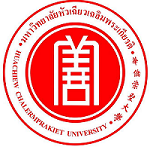Please use this identifier to cite or link to this item:
https://has.hcu.ac.th/jspui/handle/123456789/4503Full metadata record
| DC Field | Value | Language |
|---|---|---|
| dc.contributor.author | Zhao Zhihua | - |
| dc.contributor.author | Li Chao | - |
| dc.contributor.other | Huachiew Chalermprakiet University. College of Chinese Studies | en |
| dc.contributor.other | Guangxi University. School of Liberal Arts | en |
| dc.date.accessioned | 2025-09-11T13:39:25Z | - |
| dc.date.available | 2025-09-11T13:39:25Z | - |
| dc.date.issued | 2025 | - |
| dc.identifier.uri | https://has.hcu.ac.th/jspui/handle/123456789/4503 | - |
| dc.description | Proceedings of the 12th National and International Conference on "Research to Serve Society", 30th-31st July 2025 at Huachiew Chalermprakiet University, Bangphli District, Samutprakarn, Thailand. p. 406-413. | en |
| dc.description.abstract | 国际中文教学互动质量直接影响学生的语言输出与文化认知效能。本研究以“汉教英雄会”初级汉语综合课教学视频为研究对象,基于改进型弗兰德斯互动分析系统(IFIAS),运用问卷调查法与视频 分析法,揭示师生、生生及人机互动的特征与问题。旨在通过解构“汉教英雄会”的互动模式,为泰国及东南亚汉语课堂提供一套本土化、可操作的”多模态互动“优化方案,解决”机练导致语言意义缺失、技术应用浮于表面、文化认知薄弱”三大症结,推动国际中文教育向深度融合发展。分析研究发现,传统课堂互动具有以“教师主导一学生响应”的线性模式为主,技术应用钱层化,文化浸润不足,语言输出机械械性强等特点。由此,构建“多模态互动网络”的优化路径,通过角色分层、游戏化机制、技术驱动的文化沉 浸与项目式学习,能够实现语言形式、内容与意义的深度融合,为国际中文课堂 效能提升提供实践参考。 | en |
| dc.description.abstract | The quality of interaction international Chinese language teaching directly affects students' language output and cultural cognition effectiveness. This study takes the beginner-level comprehensive Chinese teaching videos from the Chinese Teaching Idols promgram as its research subject Based on the Improved Flanders Interaction Analysis System (FLAS), and employing both questionnaire surveys and video analysis methods it reveals the characteristics and issues within teacher-student, student-student, and human-computer interactions. The study aims to deconstruct the interactive patterns of Chinese Teaching Idols and propose a localized, operable multimodal interaction optimization plan for Chinese classrooms in Thailand and Southeast Asia. This addresses three major challenges: mechanical langrage training leading to a loss of communicative meaning, superficial application of educational technology, and insufficient cultural immersion. The analysis reveals that traditional classroom interactions predominantly follow a linear "teacher-dominated, student-responding" pattern, with shallow technology integration, weak cultural immersion, and highly mechanical language output In response, the study proposes an optimized pathway for constructing a multimodal interaction network through hierarchical role allocation, gamification mechanisms, technology-driven cultural immersion, and project-based learning, thereby achieving a deep integration of language form, content, and meaning, and providing practical reference for enhancing the effectiveness of international Chinese classrooms. | en |
| dc.language.iso | zh | en |
| dc.rights | มหาวิทยาลัยหัวเฉียวเฉลิมพระเกียรติ | en |
| dc.subject | 培华学校 | en |
| dc.subject | โรงเรียนป้วยฮั้ว | en |
| dc.subject | Puayhua School | en |
| dc.subject | 汉语 -- 学习和教学 -- 泰国 | en |
| dc.subject | ภาษาจีน -- การศึกษาและการสอน – ไทย | en |
| dc.subject | Chinese language -- Study and teaching – Thailand | en |
| dc.subject | 弗兰德斯互动分析 | en |
| dc.subject | การวิเคราะห์ปฏิสัมพันธ์แบบฟลานเดอร์ส | en |
| dc.subject | Flanders Interaction Analysis System | en |
| dc.subject | 教学媒体 | en |
| dc.subject | สื่อการสอน | en |
| dc.subject | Teaching -- Aids and devices | en |
| dc.title | "汉教英雄会”教学互动对泰国北榄公立培华学校汉语教学的启示 | en |
| dc.title.alternative | Implications of the "Chinese Teaching Idols" Class Interaction for Chinese Language Teaching at Puayhua School | en |
| dc.type | Proceeding Document | en |
| Appears in Collections: | College Of Chinese Studies - Proceeding Document | |
Files in This Item:
| File | Description | Size | Format | |
|---|---|---|---|---|
| Implications-of-the-Chinese-Teaching-Idols-Class-Interaction-for-Chinese-Language-Teaching-at-Puayhua-School.pdf | 948.47 kB | Adobe PDF | View/Open |
Items in DSpace are protected by copyright, with all rights reserved, unless otherwise indicated.
